Anti-State Charges Account for 93% of Journalist Arrests Since 2011
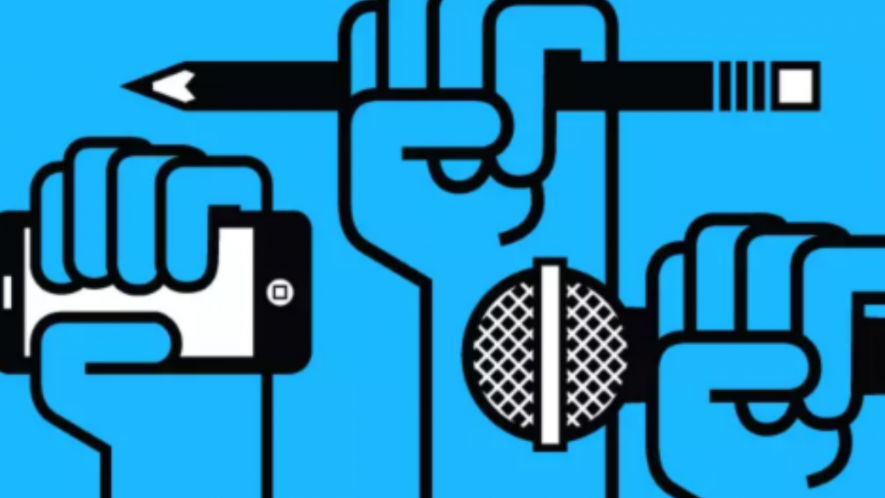
The raid and subsequent arrest of NewsClick founder and editor Prabir Purkayatha and human resources in-charge Amit Chakraborty has renewed the debate on press freedom in India. India’s slipping position in the press freedom Index also puts a question mark on press freedom in India. India is placed at the 161st spot among 180 countries on the Press Freedom Index, slipping from 150th in 2022 and 142nd in 2021.
According to the database prepared by the Committee to Protect Journalists (CPJ), India witnessed a record surge in the imprisonment of journalists in the last decade. From a total of 35 journalists sent behind bars since 1992, the CPJ database records that 29 were arrested after 2011. Seven journalists were arrested in each of the years 2021 and 2022, marking a record high since 1992. From 1992 to 2010, a total of four journalists were arrested.
The majority of journalists were arrested under anti-state charges. In 2022, seven journalists were arrested, all of whom faced charges related to anti-state activities. In 2021, out of seven journalists arrested, six were slapped with anti-state charges. A total of 31 journalists have been arrested since 2011, with 29 charged for anti-state activities.
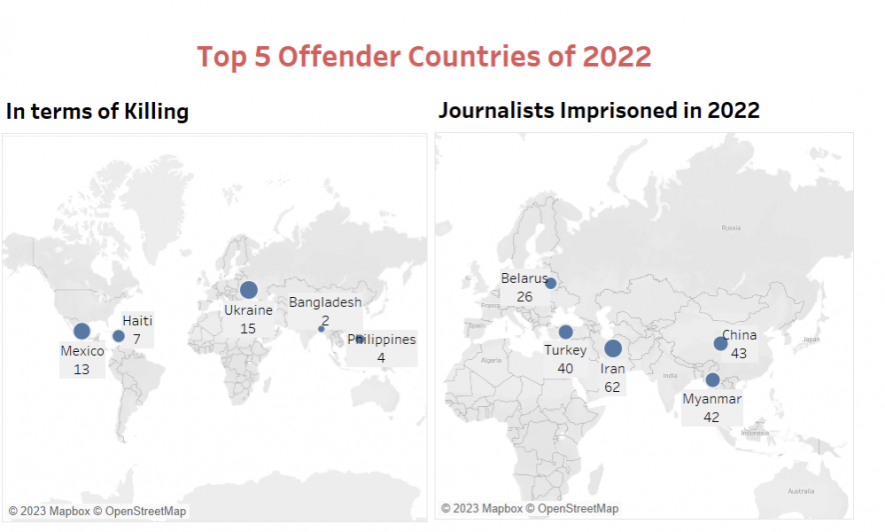
However, it was in the decade preceding the 2000s that the highest number—seven journalists in a year—were killed. That was in 1997. As per the CPJ, these deaths were related to the work of the journalists. The CPJ categorised these deaths as ‘Motive Confirmed’. In the 2000s, 2021 and 2018 witnessed the highest number of journalist deaths, with five fatalities each. A total of 58 journalists have been killed in India since 1992. If one included the killing of media workers, that is, the staff that support journalists in their work, the toll would reach 61.
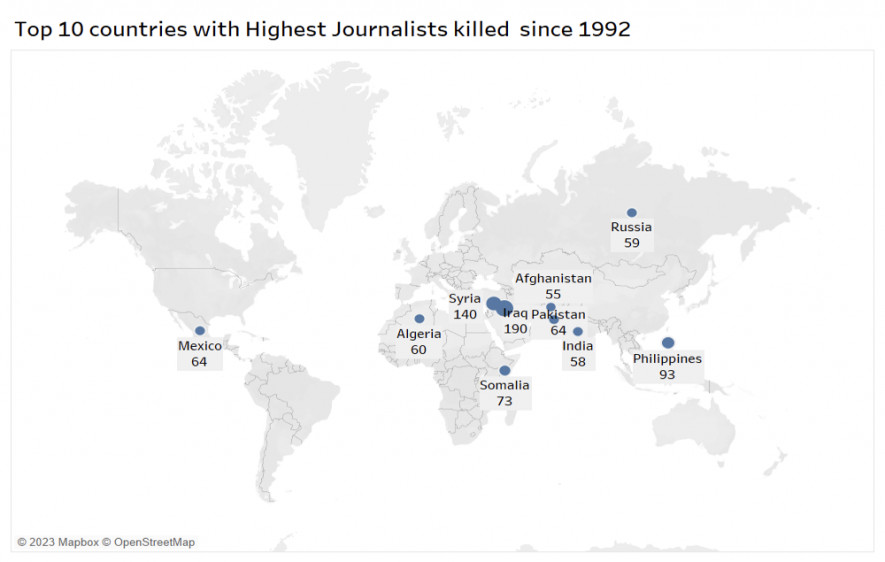
In 2022, there was only one recorded journalist death. As per the records maintained by CPJ and accessed by this writer on October 9, 2023, a print media journalist named Sashikant Warishe was killed in February this year—the only killing in 2023 so far.
India is the ninth-worst country in terms of journalist killings and falls to the eighth position when the murder of media workers is considered.
Globally, since 1992, a significant number of journalists have been jailed or lost their lives. The highest number worldwide, of 76 journalists killed, was in 2009. Although the numbers started to decline after that, in 2022, 41 journalists lost their lives globally, the highest count since 2018, when 58 journalists died in connection with their work.
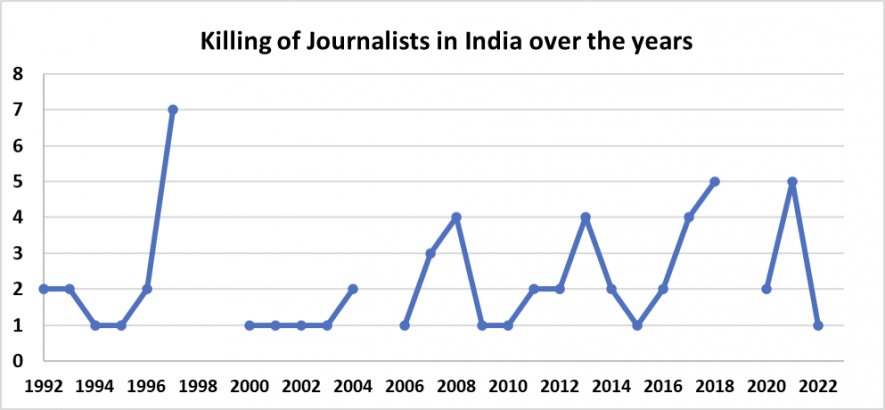
Around the world, 2022 saw the highest number of journalists— 363 in all—put behind bars since 1992. This was a 20% increase from the previous year, 2021, when 302 journalists were detained.
Top Offenders of 2022
According to the CPJ’s “Attack on Press 2022” report, 41 journalists were killed in 2022 in direct connection to their work. The committee is still investigating whether 26 other killings were work-related. Around the world, 67 journalists and media workers were killed, of which Ukraine, Mexico, and Haiti accounted for more than half, with 15, 13, and seven deaths, respectively.
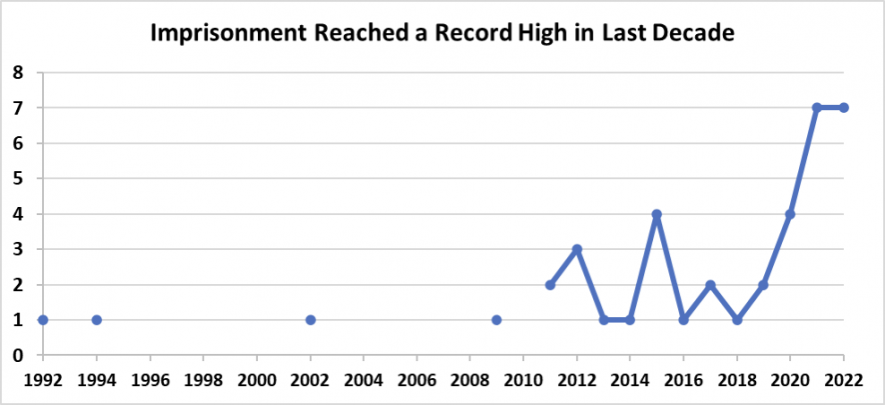
While India was ranked eleventh in terms of jailing journalists, Iran, China, Myanmar, Turkey, and Belarus were among the top five countries that jailed journalists in 2022.
“The rise was driven by a high number of journalist deaths covering the Ukraine war and a sharp rise in killings in Latin America,” CPJ maintains in its report.
In 2023, so far, ten journalists have been killed worldwide, with Ukraine reporting the highest number of fatalities at two, followed by India with one journalist death.
To be sure, it is important to note that journalist fatalities may vary depending on the organisation reporting it. The CPJ, a non-profit entity, uses its own standardised parameters for its count. It is also worth acknowledging that different organisations may employ varying assessment methodologies.
The author is an independent journalist. The views are personal.
Criminalising the Public Sphere
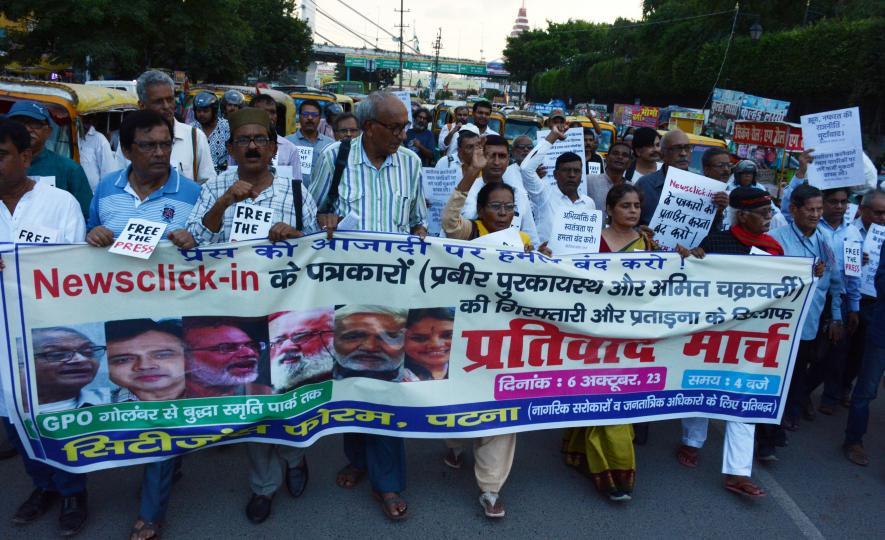
The recent spate of attacks against the media, including the recent raids against NewsClick editor Prabir Purkayastha, is not only about an attack on the independence of media and other democratic institutions; it is essentially about criminalising the public sphere and changing the popular mode of thinking from open and conversational to suspicious and conspiratorial. If it was “merely” an attack on the independence of the media, it could change with the government changing and liberating the media from the clutches of corporate control and, perhaps, bringing in better legislation to ensure its autonomy.
The attack on media and other democratic institutions is attempting to gradually build a great trust deficit in society. Autonomous and independent media signals a civil sphere with a collective based on dialogue and good conversation. Conversation is being replaced by conspiracy and dialogue with criminality. This needs to be debated alongside the freedom of media.
The narratives being spun are geared towards taking control of popular opinions and perceptions. They are geared towards encouraging a culture of rumour-mongering and forcefully justifying injustice as a necessary and only way to live. Much of this spinning began with castigating the Muslims, which found its initial legitimacy and justification in bringing Muslims under control. Such methods never stop with a social constituency but become a general governance paradigm.
The final success of toxic majoritarianism is not only in taking control of institutions but producing “manufactured consent”, which can sustain itself with a cascading effect. The protests supporting independent media should also bring into public debate the attempts at criminalising our thought process.
Criminalisation brings into submission not only the minority but also the majority, with complicity as complete submission. Majoritarianism is not about the interests of the majority but the unaccountable power of a tiny coterie that rules in the name of a majority. The protests against the attacks on media need to speak to this majority and not restrict it within themselves. Protests can no longer speak to the already converted but develop the language and symbolism necessary to talk to the majority. To do this, the protesters could possibly follow the narratives and interpret them from the vantage point of what they wish to communicate to the common person on the streets.
Unless these narratives are busted, protests will only add further anxiety to the already criminalising civil sphere. It will come across (or at least be made to come across) as a gang of self-interested honchos. Protests need to cancel out this possibility proactively.
The narratives spun since the time of cases in Bhima-Koregaon and Elgar Parishad, to demonetisation, to the attacks on Newsclick are “wheels within wheels”. They draw on the images in the popular imagination of ordinary people. Even the narrative against the allegation of being “pro-China” is linked to the coverage of farm protests and the Delhi riots. Farm protests were earlier linked to Khalistan, now to Canada, and the Delhi riots were linked to Muslims and earlier demonetisation.
Every non-Hindu symbol is being criminalised to control all those who dissent against the government. The riots in Manipur were supposedly meant to create a narrative of the dominant Hindu community against tribal/Christian communities. The growing electoral vulnerability of the government is being converted into the vulnerability and insecurity of the electorate. The mandatory secrecy necessary in security-related matters is converted into unaccountability and criminality of intent of those who question it. Weaponising secrecy adds to further criminalising of the public sphere and collective sensibilities.
Sustainable protests that need to stall the criminalisation of the popular will require a different language beyond those of protecting “freedom of expression”, media independence and the sanctity of the Constitution. These are the end results of a protest, but the process is in the domain of the popular, where these ideals do not have an immediate affective value. The irony of liberal democracy is that what is liberal remains liberal because of its distance and a circumspect attitude towards the popular—and the popular always works outside the registers of institutionalised liberalism.
Majoritarianism is thriving by exploiting the hiatus between the liberal precepts and democratic mobilisation meant to check one another so as to reinforce each other.
Protests will have to bring them together. They need to appreciate sensibilities in the popular domains to strengthen certain liberal openness that is necessary for democratic functioning and to keep majoritarianism at bay. The language of the literati in Delhi has not transformed itself to achieve a larger appeal beyond the registers of those who follow and support them.
How does a protest for freedom of expression gain popular appeal in the mofussil of vernacular democracies?
Perhaps the value of freedom of expression linked to the growing trust deficit and increasing vulnerability and insecurity of the majority community in India will ring a bell. The problem with secular-progressive language is that such appeals reinforce the conception of a majority or neglect or exclude the minority. The strength of the dominant narrative of the current dispensation is that it can play out the contradictions in a manner that favours them. It could strengthen the support of castes through masculine narratives, then turn towards women to gain their support through announcing reservations for women. Going slow on the wrestlers’ protests gains the support of caste egos and fossilised masculine sensibilities, which is sought to be offset by clearing the law for women’s reservations.
The standards of fairness and justice overpower the sensibilities of the popular domain, while the contextual narratives of the popular are veering towards conspiratorial criminality. It is this mobilisational flow into different, sometimes mutually exclusive directions that brings a kind of opaqueness to the process. Protests in defence of a “free press” need to connect closer to the popular—not necessarily to agree with everything that goes within the popular but to show what goes on Delhi matters for democracy in the mofussil. Unless the majority sees what is going on as detrimental to its interests and its ethical quotient, it may not get mobilised around abstract (liberal) ideals of freedom of expression.
The author is an associate professor at the Centre for Political Studies, Jawaharlal Nehru University. The views are personal.
No comments:
Post a Comment